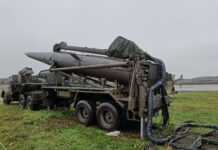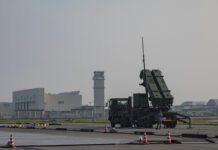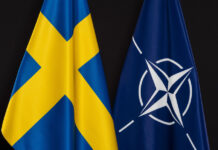Well, they certainly seem to be headed that way. While some order books might be fuller than others, construction capabilities at European shipyards overall are enough to rival leading naval shipyards in almost any global region. Moreover, construction projects now underway point to a turnaround which should gather pace, particularly if defence budgets improve.
Low investment in their navies in recent years by respective allied European governments has left many of Europe’s fleets quantitatively weakened. The United Kingdom’s Royal Navy (RN) is a prime example, with just 68 commissioned ships as at January 2024 compared with over 115 at the time of the Falklands War in 1982. That said, some countries, like Spain and Turkey, currently have clear self-reliance initiatives in play that include bolstering their naval forces and tonnage. So, while years of defence-spending tightening has led, in some cases, to smaller, neglected navies and thinner order books for Europe’s shipyards, the capabilities and competitiveness of those yards to meet requirements for the most technologically sophisticated vessels, either at home or abroad, remains strong.
This article considers the latest fortunes of Europe’s naval shipyards, using a few selected examples as benchmark indictors as to the direction of travel.
Analytical overview
To gauge what kind of demand Europe’s shipyards might expect for their services in the coming years, a look at recent summary market analysis from Mordor Intelligence’s Europe Naval Vessels Market Size and Share Analysis – Growth Trends and Forecasts (2024-2029) is informative. This estimates the size of Europe’s naval vessel market in 2024 will reach USD 35.44 billion by year end and also projects it will grow to USD 57.62 billion by 2029, suggesting considerable added build potential for European naval shipyards. While the report covers a range of vessel types, from aircraft carriers, corvettes, and destroyers, to frigates, submarines and more, it suggests that the market has been “propelled” by recent frigate and offshore patrol vessel (OPV) developments. This is due to performance demands by customers for what it lists as their “lethality, speed, and manoeuvrability” to meet requirements driven by increases in such challenges as drug trafficking and illegal migration by boat in the waters of the Mediterranean, particularly around Albania, Italy and Spain.
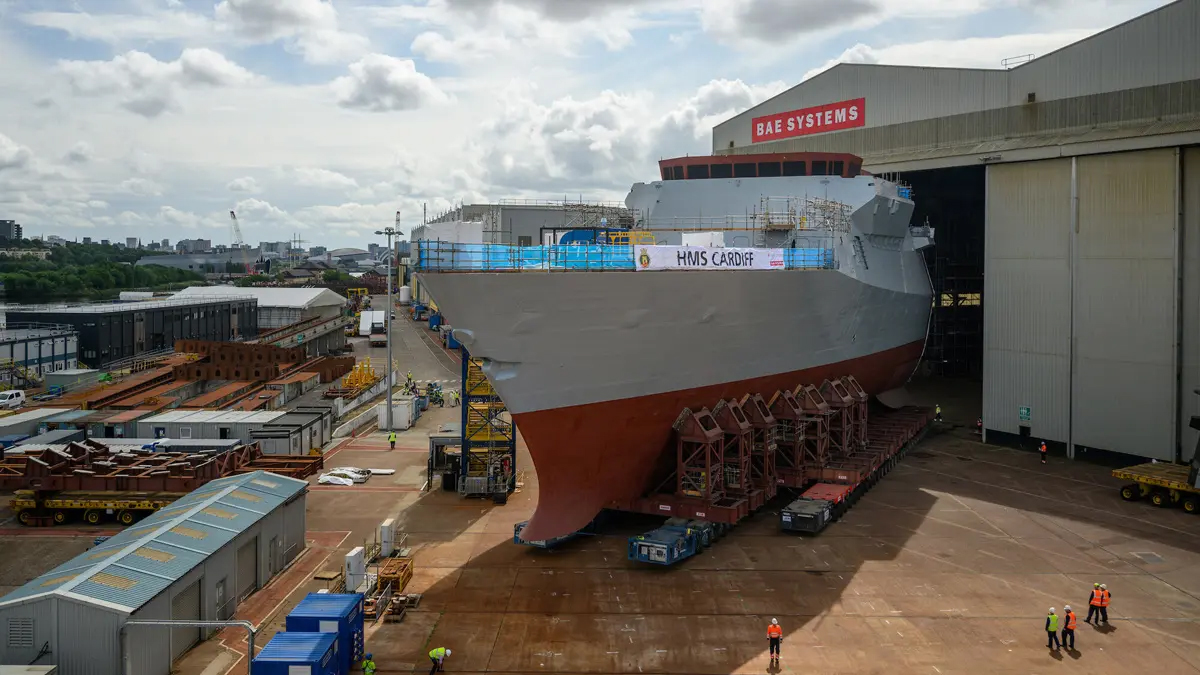
Credit: BAE Systems
Indeed, when it comes to frigates, the report suggests that at over 3,000 tonnes and with their mix of defensive and offensive weaponry, these vessels are increasingly popular with navies worldwide, as their multi-role nature sees them suited to a wide range of applications, from ship escort and anti-piracy roles, to patrolling, and strike group participation. The report’s authors even suggest that many countries are increasing their defence budgets specifically to be able to afford frigates, including where aged frigate fleets need replacing with more modern vessels incorporating the latest sensors and anti-ship, anti-submarine and air-defence weapon systems. In fact, the report projects that during the forecast period to 2029, there will be steady frigate-build growth, with “the majority of frigate procurement planned in Europe”, a statement it backs up citing the United Kingdom Ministry of Defence’s (MoD’s) award to BAE Systems for Type 26 frigates for the RN. All eight of these are being built in Govan, Glasgow, with the first, HMS Glasgow, currently undergoing outfitting at BAE Systems’ Scotstoun yard, and HMS Cardiff, the second ship of the class, well underway in its construction at Govan. The programme is expected to last until the mid-2030s and supports the steady growth in the construction of frigates at European yards and beyond during the report’s forecast period. The paper also reminds readers of the United Kingdom’s plans to increase RN frigate and destroyer numbers in the longer term.
Meanwhile, on the continent, players such as Navantia, Naval Group, Fincantieri and ThyssenKrupp are cited as some of naval shipbuilding’s dominant companies, most having several yards dedicated solely to naval work and all with business strategies in place to win orders from both European and overseas customers. In addition, some of these yards are increasingly collaborating on a number of major programmes. One of the most significant – which has been stated as having the potential to reinvigorate naval shipbuilding across Europe – is the European Patrol Corvette (EPC) project. Its first, initial design phase began in October 2023 following signature of a contract between Europe’s Organisation for Joint Armament Cooperation (OCCAR) and a consortium coordinated by Naviris that includes Fincantieri (Italy), Naval Group (France) and Navantia (Italy) within its key membership. France, Greece, Italy, Norway and Spain have all officially joined the project, while Ireland, Portugal and Romania are observers. [1] Importantly for industry, the participants agreed that a key objective of the project to build these vessels is to maximise collaboration between Europe’s shipbuilding industries and shipyards. A statement from Naval Group at the time of the launch ceremony said the EPC programme represented a step forward in European defence cooperation that will contribute to European second-line vessel dominance, strengthen European industry in-house skills and know-how, and increase shipbuilding efficiency, with a corresponding decrease in the delays that are currently experienced delivering ships to navies.
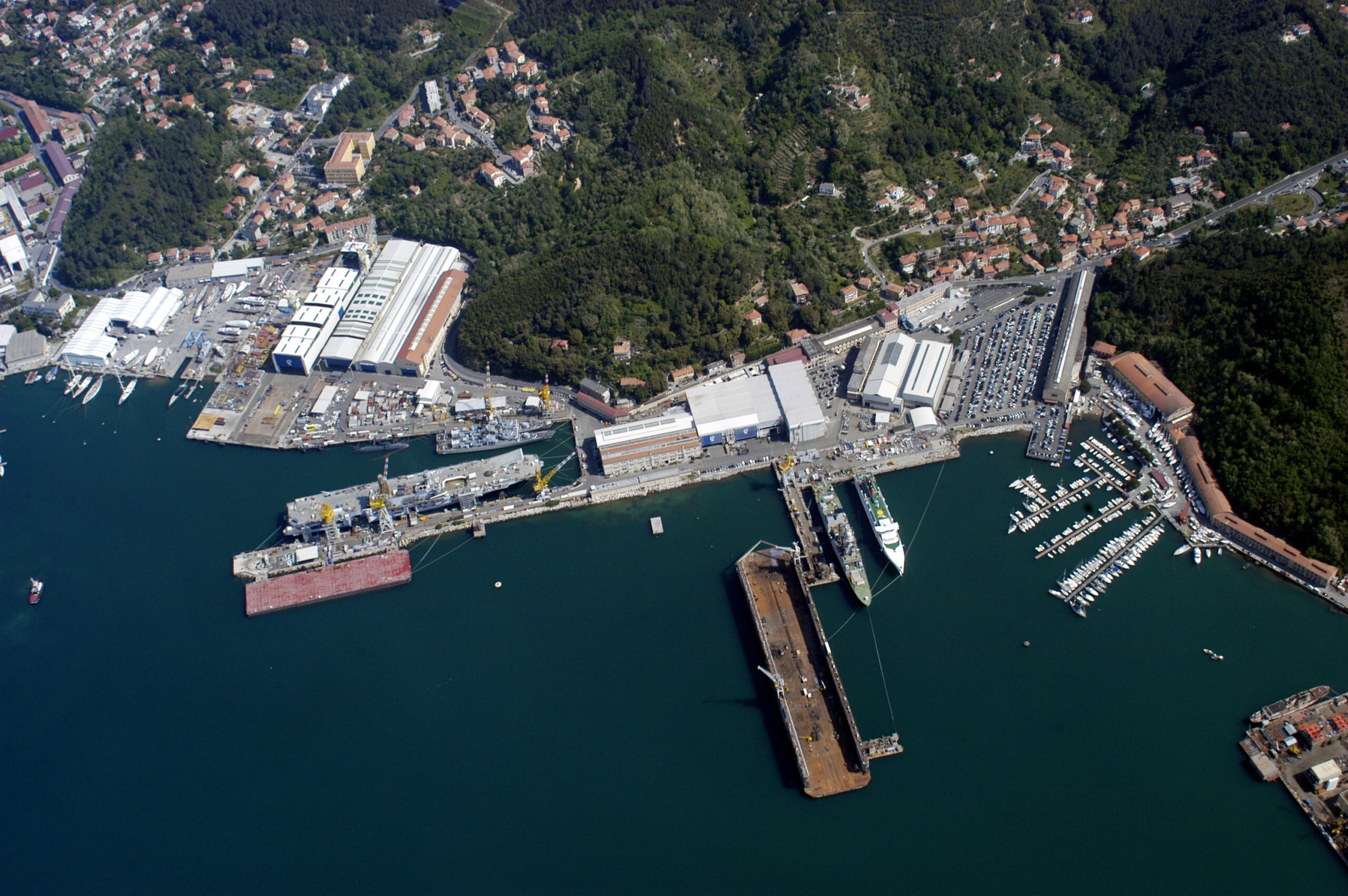
Credit: Fincantieri
Developments at key yards: benchmark indicators
Europe’s allied nations within NATO have had a rude awakening these past few years. Even before Russia’s invasion of Ukraine, their budgetary contributions to the alliance had been called (possibly with good reason) into question during the ‘first’ Trump Presidency, threatening the organisation’s longer term stability. Nevertheless, Indonesia’s recent award of a EUR 1.18 billion contract to Italy’s leading naval yard, Fincantieri, for two PPA (‘Pattugliatori Polivalenti d’Altura’) multi-purpose patrol vessels suggests overseas confidence in European naval shipyards’ construction capabilities and competitiveness despite the uncertainties of the underlying geopolitical backdrop. The fact that the ward was gained despite the existence of extremely competent regional yards in the likes of South Korea is all the more telling.
Fincantieri does have a group strategy to grow its defence business, including export opportunities, and already has an established relationship with Jakarta. This includes a deal for six FREMM type frigates and two second-hand, ex-Italian Navy Maestrale class vessels first reported in mid-2021 but for which negotiations are reportedly, still ongoing. However, the Italian MoD’s efforts to showcase the PPA class vessel, ITS Francesco Morosini, in Southeast Asian ports during 2023 seem to have paid off with the announcement of this latest contract. The two vessels for Indonesia are currently under construction and being fitted out at Fincantieri’s joint Riva Trigoso-Muggiano shipyard complex and were originally part of an intended seven-strong PPA contingent for Italy’s navy before the Indonesian deal was concluded. The original order was awarded in 2015 to a consortium of Fincantieri and Leonardo. With support from the Italian MoD and navy, the Italian companies intend to foster their relationship and explore further opportunities with the Indonesia in line with its business plans to strengthen the company’s overall presence in the geopolitically ‘hot’ Southeast Asia region.
Fincantieri is just one among the many leading European shipyards which continue to prove successful in gaining contracts to deliver complex and technologically advanced ships. For example, Anglo-Polish collaboration on the Polish Navy’s ‘Miecznik’ (Swordfish) frigate programme – also known as Project 106 in Poland — will see three multi-role vessels based on Babcock International’s Arrowhead 140 design deliver increased combat capabilities to the Polish Navy. At a shipyard level, the ships are being built at the Polish Armaments Group (PGZ) Stocznia Wojenna shipyard in Gdynia. Here a keel laying ceremony for the first of the three ships – ORP Wicher – took place at the end of January. The programme involves the largest investment in infrastructure such as building halls, equipment and machinery that the shipyard has ever experienced. Indeed, Paweł Lulewicz, president of PGZ Stocznia Wojenna, said at the time of the keel-laying ceremony that the event would not have been possible without the extensive changes the yard has recently undergone. However, he also wore the shipyards heart on his sleeve when he said, “These changes are primarily the result of the crew’s trust in the management board and the good, joint work of our team – workers, engineers and specialists in purchasing and cooperation, thanks to which we have managed to turn the fortunes of this shipyard around over the last few years – from bankruptcy to a profit-generating company cooperating with world-class players.”

Credit: Fincantieri
ORP Wicher’s keel laying was actually the first in 23 years for a new Polish Navy combat vessel at the yard’s Jana Śmidowicza Street facility in Gdynia, according to the company. Wicher will be followed by Burza and Huragan, with the importance of the whole programme for Poland’s shipbuilding industry summed up in words of PGZ’s management board president, Sebastian Chwałek, who said it marked the beginning of a new stage in the history of the country’s shipbuilding industry, as it was the first time such a significant combat vessel has been built on Polish soil. The programme, which involves extensive knowledge sharing with British partners Babcock and Thales UK, should see ORP Wicher enter service in 2029, with the remaining two vessels operational by 2032, thereby marking the completion of the Miecznik programme.
British Government official, Investment Minister Lord Dominic Johnson, who – along with the MoD, RN and the UK Defence and Security Exports (UKDSE) unit of the Department for Business and Trade – has been involved in the negotiations resulting in the agreements between the main British companies involved and PGZ, said the agreement was a major vote of confidence in the UK’s “world-class industrial expertise”, adding that the partnership with Poland would further strengthen the Polish fleet by putting some of the “best UK capabilities behind it”. This obviously includes the shipbuilding and naval design/architecture strengths of Babcock. Johnson added that long-term economic and defence cooperation between the two countries would also further bolster “the UK’s competitive export offer” for such naval construction capabilities. Many of his comments were echoed by James Cartlidge, UK Minister for Defence Procurement. He noted that having an important NATO ally choose warships for its fleet based on the British Arrowhead 140 base design for the RN’s Type 31 Inspiration class frigates, would not only enhance the Polish fleet but would also enhance interoperability between the two navies.

Credit: PGZ
So, while Polish yards are set to build the vessels, the programme’s collaboration between the three main stakeholders – PGZ, Babcock and Thales UK – is crucial to the overall PGZ consortium, (mention should be made that MBDA UK has also recently been contracted by PGZ to provide the naval air defence system aboard the vessels). In particular, it is Babcock’s expertise in shipbuilding and naval architecture that underpins its key roles as the provider of a design licence agreement for its Arrowhead 140 frigate and as the platform design provider and strategic technology partner for the Miecznik Programme. As if that is not enough, it is also a member of the programme management office that oversees the vessels’ design and construction. These important roles for Babcock in Poland’s frigate programme should be no surprise based on the company’s extensive naval sector expertise in the United Kingdom and elsewhere. The company actually established Babcock Polska five years ago to specifically support delivery of the frigate programme. Its HQ in Warsaw and an office in Gdynia employ some 30 Babcock personnel.
Back home, Babcock’s manufacturing facility at its Rosyth shipyard in Scotland is the digitally-led yard from which the company conducts its ongoing efforts to drive further export opportunities of the Arrowhead 140 design, helping to roll out the vessel’s blueprint, engineering processes, and knowledge sharing for export customers around the globe. Indonesia is currently another customer set to acquire new Arrowhead 140 series frigates.

Credit: Babcock International
Spanish footnote
Aside from its prominent place in the EPC Programme, it is also worth noting Navantia’s recent corvette and hydrographic vessel contracts. Both underline a healthy order book at the company’s home shipyards for ships destined for the Spanish Navy, as well as significant export customers such as the Kingdom of Saudi Arabia. The latter saw the March commissioning and delivery to the Royal Saudi Naval Forces of the fifth and last corvette of the Al-Sarawat project, with all the ships having been built at Navantia’s Bay of Cádiz shipyards. Final construction and systems integration works of later ships have, however, taken place in Jeddah in collaboration with Saudi Arabian Military Industries (SAMI); Navantia and SAMI have formed a joint venture allowing the Spanish shipbuilder to position itself in the Arab market and area of influence, which fits its overseas business strategy. The joint venture projects a global workload of around seven million hours and 6,000 jobs over five years, according to a company statement.
As for the two coastal hydrographic vessels (BHCs) for the Spanish Navy, the Spanish MoD and Navantia agreed their construction in December 2023 to replace the hydrographic vessel Antares. She was built in the 1970s and is the only one of four Castor class vessels still in use. The ships will be built at Navantia’s San Fernando shipyard in the Bay of Cádiz. Here the work over the next four years will support 700 jobs.
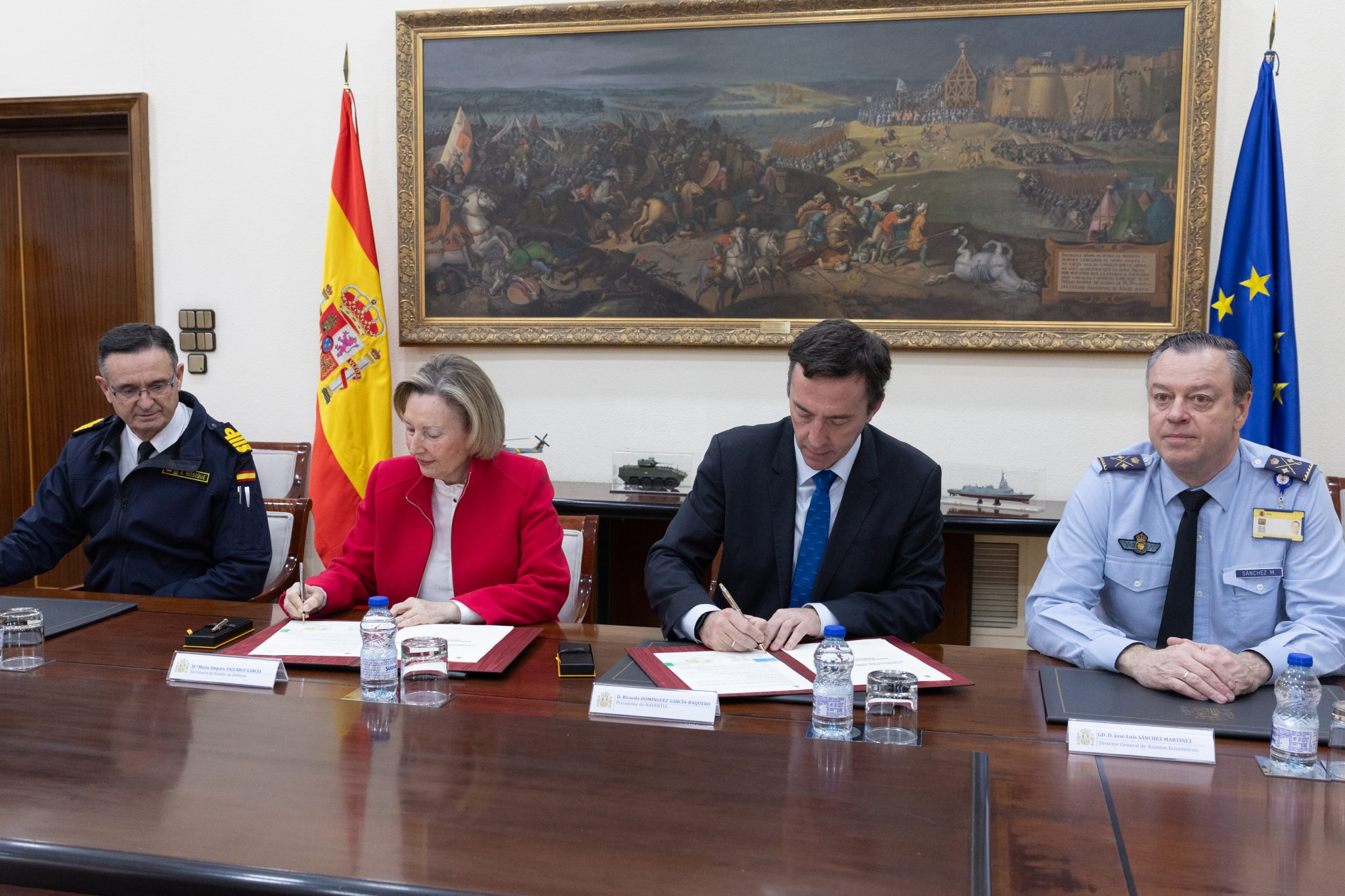
Credit: Navantia/Spanish MoD
Conclusion
Space precludes mention of every European shipyard, every kind of naval vessel, and every new development being undertaken by the continent’s shipyards. However, the examples provided are evidence of the vast wealth of experience and ability to deliver high quality products that typify the region’s shipbuilding sector. From the programmes underway, the collaborations and knowledge-sharing taking place, and the obvious overseas interest being shown, Europe’s naval shipyards certainly remain competitive on the world stage to meet the most technologically demanding naval vessel requirements. Given today’s threatening atmosphere, government defence budget-holders and defence ministries would be well advised to keep order books full for their home-grown yards, bolstering their allied naval fleets, fast, in the face of the gathering storm.
Author: Tim Guest is a freelance journalist, European Correspondent for ESD, and a former officer in the British Forces.






